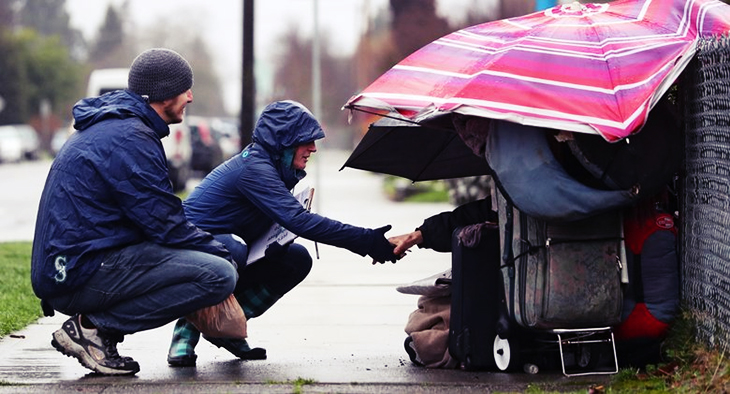
Since 2007, the overall number of homeless people in the US has very gradually decreased. Acknowledging that high levels of homelessness are an indictment of the governing party, every administration has attempted to address different causes of homelessness, and it is encouraging that these efforts have been rewarded.
However, as we roll into the next decade, there are quite a few emerging issues as yet unaddressed by government, which may mean chronic, transitional or episodic homelessness may rise again.
Income Inequality
Despite a lot of very public discourse on the subject, income inequality is still very much an issue that isn’t going away. Democrat candidates and representatives often put the problem front and center of their policies, but there is, as yet, no meaningful resolution.
Those hardest hit have generally been minorities and of course, there is the hot button issue of the gender pay disparity. Sustained and persistent income inequality leads to financial instability, a fundamental cause of homelessness.
Living Wage
It isn’t just those who are on the short end of income inequality that is likely to suffer desperate financial hardship. All industries since the global financial crisis have seen gross wage stagnation and an increase in low paying roles.
The assurances from the current administration that the economy is improving do not account for the fact that the lowest-paid workers often pay over a third of their income on accommodation. In some states, there are already workers who rely on state-funded shelter to keep them off the streets.
Care for an aging population
The boomer generation is maturing now to pensionable age. Retirement services and healthcare providers are likely to be under considerable strain in the coming years, and the income from a pension will only go so far.
While different administrations continue to debate public health initiatives vs private healthcare, many of those who suffer age-related illnesses have been unable to retire to pay for their treatments. Once they are no longer able to work, they may rely on family members for shelter, who in turn may not be able to bear that financial burden.
Single people
In the past, couples would remain together into retirement years, even when it could be psychologically damaging. Conservative politicians and media pundits saw this as an ideal, not only socially but economically.
But things have changed regardless, and no longer do people view raising a family or remaining in a relationship with the same gravity they once did. It does raise some important questions: without these support networks how will career-focused millennials remain financially stable when they too reach retirement age?
Mental Health
A large percentage of those on the streets suffer from some form of mental instability, including severe depression, schizoaffective disorders or drugs and alcohol-related issues which have often stemmed from depression.
Work-life balance is at an all-time low for many, and the prevalence of poor workplace culture can leave many feeling alienated or stressed. This can lead to premature resignations with no financial backup. Ultimately, to stem the potential tide of homelessness that we’re likely to see in the 2020s, we need now to address the disheartening levels of poor mental health.


